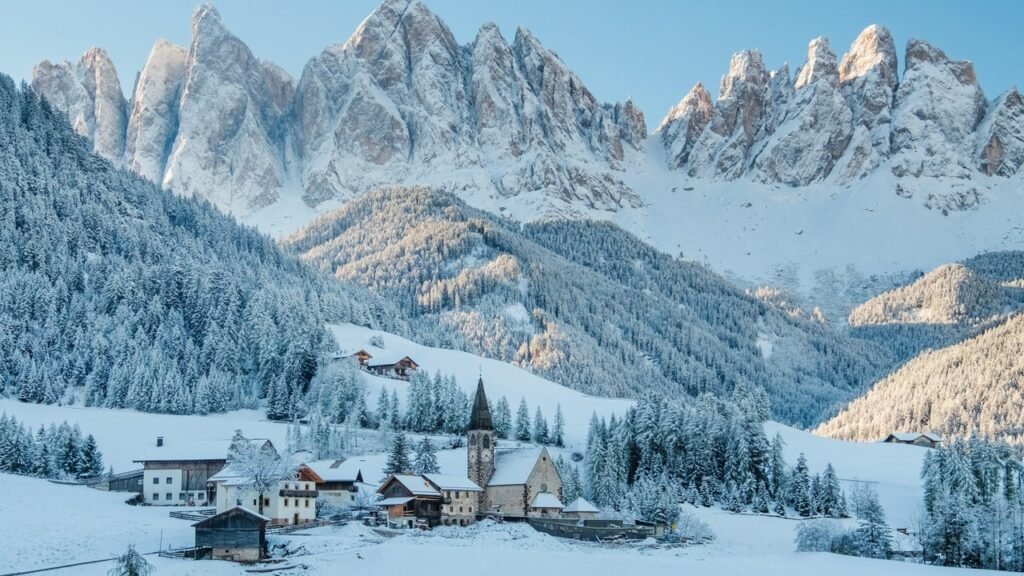Introduction
The Dolomites, with their breathtaking views and popular ski resorts, attract thousands of visitors every winter. However, not every year brings the same amount of snow, which leads many to ask: Does La Niña impact snow in Dolomites? This question is essential for travelers planning ski trips and locals who rely on winter tourism.
La Niña is a well-known climate pattern that influences weather across the globe, from increased rainfall in some areas to colder winters in others. But what about the Dolomites? In this post, we’ll explore how La Niña affects global weather, whether it impacts snowfall in Dolomites, and what this means for travelers and ski enthusiasts.
What Is Does La Niña impact snow in Dolomites ?
La Niña is a natural weather pattern that occurs when surface temperatures in the central and eastern Pacific Ocean become cooler than average. This cooling shifts wind patterns, which then alter weather systems worldwide. Typically, La Niña causes wetter weather in Southeast Asia and colder winters in North America.
While La Niña has a clear impact on the Pacific region, it can also influence Europe. Northern Europe tends to experience colder winters during La Niña events, but southern Europe, including parts of Italy, often sees drier conditions. This raises the question: Does La Niña impact snow in Dolomites, or are other factors more influential in determining snowfall here?
The Dolomites: A Winter Playground
The Dolomites, located in northeastern Italy, are a UNESCO World Heritage site known for skiing, snowboarding, and winter sports. With a typical snowfall season running from December to March, the region relies heavily on snow for its thriving tourism industry. However, snow levels vary each year—some winters see plenty of powder, while others fall short.
Given their unique location, the Dolomites are affected by both northern cold fronts and Mediterranean air masses. These mixed influences make the snowfall less predictable, which is why global weather patterns like La Niña spark interest. Travelers often wonder if planning their trip during a La Niña year will guarantee snow-covered slopes.
Does La Niña Impact Snow in Dolomites?
In theory, La Niña could affect snowfall in the Dolomites, but the outcome isn’t always consistent. During La Niña winters, northern Europe often gets colder, wetter conditions, which can benefit the Alps. However, the Dolomites are farther south, meaning they might also experience drier weather if Mediterranean systems dominate.
Some winters during La Niña years have brought excellent snowfall to the Dolomites. For example, the 2010-2011 La Niña winter delivered cold temperatures and heavy snow across the Alps, including this region. On the flip side, the 2017-2018 La Niña season was less reliable, with snowstorms followed by long dry periods. So while La Niña can have an impact, it doesn’t guarantee consistent snowfall every time.
Climate Change Complicates Predictions
While La Niña influences weather patterns, climate change adds another layer of complexity. In recent years, winters have become warmer across Europe, including the Dolomites. Even during a La Niña winter, rising temperatures can turn snow into rain, reducing snow cover on the slopes.
Scientists warn that climate change might also alter the frequency and strength of La Niña events in the future. This could lead to more unpredictable weather, with both extremely snowy winters and unusually dry ones. For travelers, this means relying solely on La Niña forecasts might not be enough to plan a perfect ski trip.
What to Expect This Winter

If La Niña is active this winter, the Dolomites could see colder conditions, which may help with snow accumulation. However, the region’s snowfall will still depend on local weather patterns. To increase the chance of good skiing conditions, travelers should plan their trip during the peak snowfall months of January and February.
Even when natural snow is limited, most ski resorts in the Dolomites are equipped with snow-making machines to ensure that slopes remain open. It’s also wise to check weather forecasts regularly before your trip to stay updated on conditions. High-altitude resorts typically fare better, so they’re a safe bet if snowfall is uncertain.
Conclusion Does La Niña impact snow in Dolomites
So, does La Niña impact snow in Dolomites? The answer is: sometimes, but not always. While La Niña can bring colder weather and increased snowfall to some parts of Europe, its impact on the Dolomites is less predictable. Local weather systems, along with the effects of climate change, play a significant role in determining how much snow the region receives each winter.
If you’re planning a ski trip to the Dolomites, it’s best to monitor forecasts and book your stay during January or February, when snow conditions are usually at their best. Even if snowfall isn’t guaranteed, the Dolomites remain a fantastic winter destination, thanks to their scenic beauty and well-prepared resorts.
FAQs About Does La Niña impact snow in Dolomites
1. When is the best time to ski in the Dolomites?
January and February offer the most reliable snowfall, making them the ideal months for skiing.
2. Does La Niña guarantee heavy snow in the Dolomites?
No, La Niña can influence weather patterns, but other local factors also affect snowfall in the region.
3. How does climate change affect snowfall in the Dolomites?
Warmer winters caused by climate change are reducing snow levels and shortening the ski season.
4. Do Dolomite resorts have snow-making machines?
Yes, most resorts use snow-making equipment to maintain good skiing conditions, even during dry winters.
5. How can I prepare for uncertain snow conditions?
Keep an eye on forecasts, book during peak snow months, and consider staying at higher-altitude resorts for better snow.



